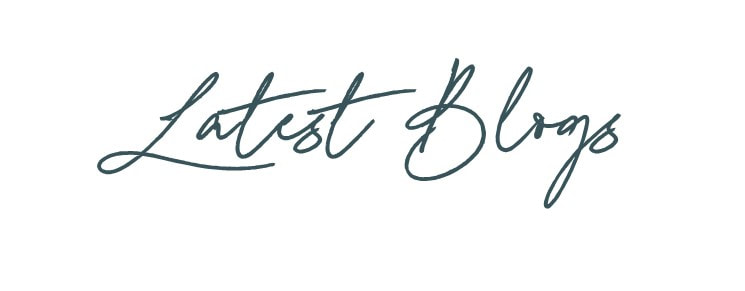|
If you work with kids, you also work with parents. I truly believe that parents are the most important people, supports, and structures in their child’s life. Even though the child may come into the therapy office or Playroom once per week - their parents are the ones that are in the thick of it, every day, with their children. They hold the attachment relationship with their child, which is a powerful means for helping children regulate, develop, and grow. And ...research shows that parent engagement in therapy actually leads to improved outcomes. Inevitably we do some sort of parenting work with the families that we see. I would say that when I work with parents it is a combination of Dr. Daniel Siegel and Dr. Tina Payne Bryson with books like No Drama Discipline along with Cognitive Behavioral Therapy paired with a heavy dose of Polyvagal Theory. Now, one of the things that comes up often is the importance of consistency and how follow through or lack thereof can significantly impact the way children may act in the future. Let me pause for a moment. When talking about boundaries, limits, and consequences vs. threats I am talking about engagement with the child who still has access to their prefrontal cortex, reason, logic and decision making - not the child who is in their sympathetic nervous system (or fight/flight response). That is a whole different type of parenting technique. If you want to learn more about the differences and how parenting strategies are different depending on what area of the brain is functioning check out this training HERE. Okay - now back to the child that is struggling with limits, maybe whining, glaring - but they are still with you. They can still hear you and can still communicate. Parents often will struggle with not wanting to threaten their children, wanting to make a boundary with impact, and aren’t quite sure how to put it all together. Sometimes I hear things like Halloween has been taken away, a child is grounded for the summer, or isn’t allowed to play in the big game or dance in the big show. Most often the parent ...well...reconsiders or just doesn’t follow through with the big thing in the end. I get it - parents are stressed and want to say something impactful so their child will listen, comply, and regulate. At the same time they still care for their child and want them to have fun and enjoy the things that make childhood great. One of the things I highlight with the families that I work with is that if you are going to put something out of the table it must be something you are willing to follow through with. Period. If parents aren’t willing to follow through with the thing they are telling their child is going to happen one of two things happen, usually both. Thing one is that the child learns that the parent isn’t really serious with the structure they are attempting to put into place. In the future children retrieve this data and may make a decision to continue to engage in a behavior (which I like to call “jackpotting”) because they don’t think the parent is likely to follow through with what they are saying because they haven’t in the past. This is most frustrating for everyone involved. Thing two is there is a high level of likelihood that there will be damage to the relationship. The parent escalates and may say or do things that they may regret later. If the limit is actually put into place then the child can feel like it was unfair because that wasn’t how “the rules” worked before. The parent feels disrespected and the child feels blindsided. Lose lose. This is where threats vs. boundaries and limits come into play. A threat is something that a person is highly unlikely to act upon and is intended to make the child act in a certain way. Usually a threat has a high level of stake (ie see above with no Halloween, activities, or intense groundings) meant to engage in behavior change through the child’s fear. In short the intent is that they listen because they are scared. On the other hand boundaries, limits, and consequences are a statement of what the expected behaviors are and what the parent will do in response to a child breaking a rule or limit. All of these are meant to engage in teaching a child with the relationship and attachment at the forefront. Limits and boundaries come into play to help the child understand what the expected behavior is and the structure around behavior and privileges. It might sound like:
Consequences come into play after a limit or boundary has been broken. We know what this looks like. The child who sneaks technology at night, shoves the mess in their room under the bed, or continues to use disrespectful language. Consequences then sound like:
Always with a good dose of empathy, connection, naming feelings before we deliver what the consequence will be. Consequences in a natural logical way are meant to keep the attachment relationship intact along with developing an internal locus of control and ethical compass about what appropriate behaviors and choices are. The child decides to follow rules because they know that's "what's right" for both themselves and the world around them. What are your go to phrases to help parents set limits, consequences, and boundaries? Let me know in the comments below! Let's Connect - click here to join my email list!
2 Comments
Joy Moore
8/2/2021 05:33:10 am
I love this article you wrote - Sooo "Love and Logic" and well written. I intend on using it with any parent I come across this week - a great aid for today! I've been following you and love your work!
Reply
Ann Meehan
8/8/2021 07:10:12 pm
Ahh Joy I am so glad I'm not the only one!! And YES I love "Love and Logic" too!
Reply
Leave a Reply. |
Hi, there!I'm Ann Meehan, an LPCC, Loading... Archives
July 2024
Categories
All
|
Privacy Policies | Terms of Use | Disclaimer
Contact
[email protected] | Copyright Meehan Mental Health Services 2022
Contact
[email protected] | Copyright Meehan Mental Health Services 2022





